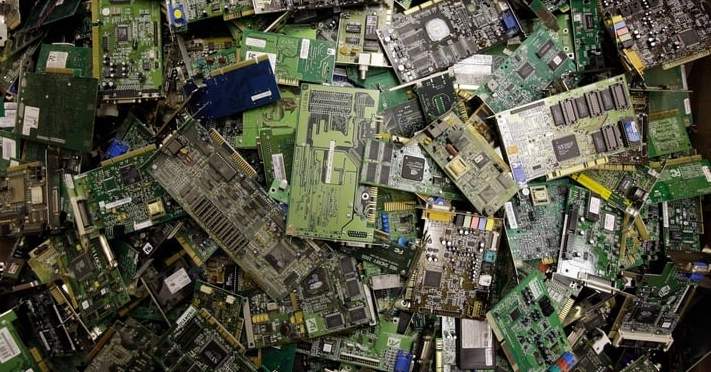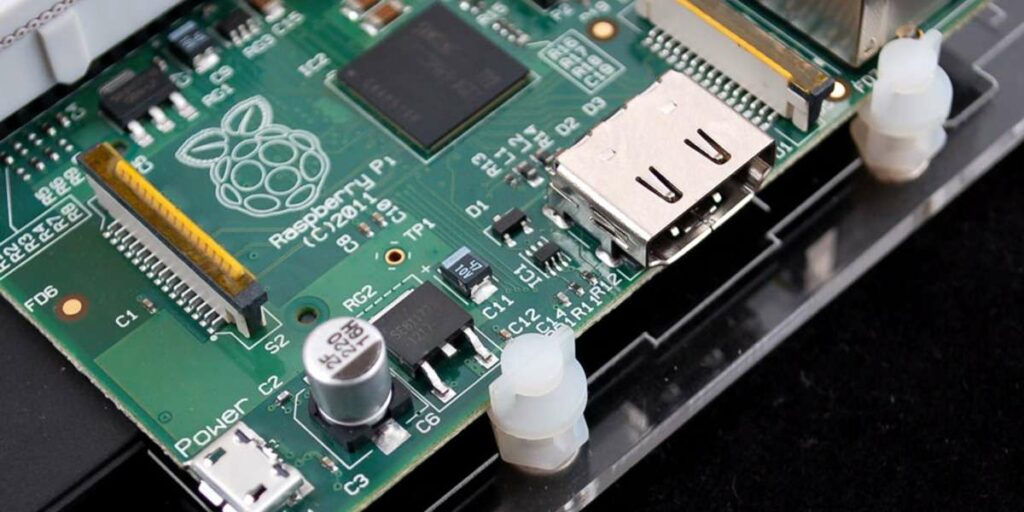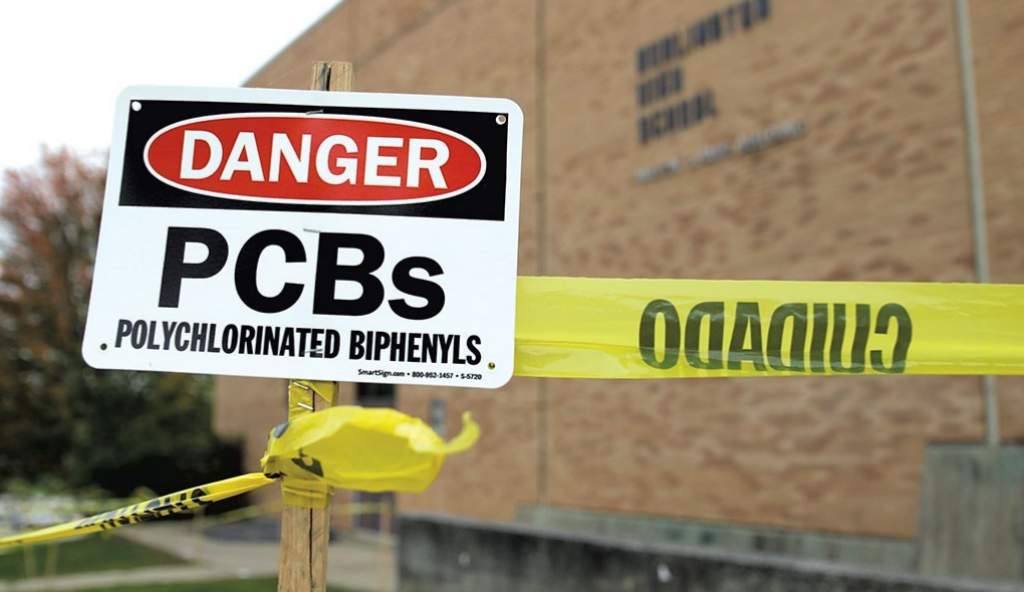Polychlorinated biphenyls (PCBs) are a group of man-made organic chemicals that were used extensively in industrial and commercial applications before being banned in the 1970s due to concerns about their toxicity and persistence in the environment. PCB pollution refers to their release into the environment and the resulting contamination of air, water, soil, and food chains.
A Brief History of PCBs
PCBs were first commercially produced in the 1920s and used in a variety of industrial and commercial applications, including:
- Electrical equipment like transformers and capacitors
- Heat transfer fluids in heat exchangers
- Hydraulic fluids
- Lubricating and cutting oils
- Paints, dyes, and inks
- Adhesives, sealants, and plastics
- Carbonless copy paper
PCBs were valued for their high thermal stability, chemical stability, and electrical insulating properties. Different formulations were created by the manufacturer Monsanto and marketed under the trade name Aroclor. The manufacture of PCBs peaked in the 1960s and 70s before being banned in many countries due to concerns about their toxicity and persistence.
Why are PCBs a Pollutant?

There are several key properties of PCBs that make them a problematic environmental pollutant:
Persistence
PCBs are very resistant to degradation and can persist in the environment for decades. This allows them to bioaccumulate in food chains and reach high concentrations over time.
Toxicity
PCBs can cause a range of adverse health effects in humans and wildlife, including cancer, impacts to the immune system, reproductive effects, and neurological effects.
Mobility
PCBs can cycle between different environmental media like air, water, soil, and sediment. This allows them to migrate from the source of contamination and lead to widespread pollution.
Sources of PCB Pollution
There are several ways that PCBs can be released into the environment:
Legacy contamination
Decades of widespread PCB use in industrial equipment, building materials, and consumer products has left a legacy of persistent PCB pollution that is still working its way through environmental systems. Things like hazardous waste sites, contaminated buildings, and landfills can all leach PCBs.
Ongoing leaks and spills
PCBs are still inadvertently generated as a byproduct of certain industrial processes. Leaks or spills of products/wastes containing PCBs can lead to new contamination.
Improper disposal
PCB-containing equipment and products that are not properly handled at end of life can release PCBs if scrapped, dumped, incinerated, or landfilled incorrectly.
Natural sources
There may be some natural sources of PCB-like compounds formed by biological or geochemical processes, but commercial PCB mixtures are overwhelmingly from human industrial activities.
Environmental Cycling and Transport of PCBs
Once released into the environment, PCBs are distributed through various environmental media and can accumulate far from the original source:
Air
PCBs can evaporate from contaminated surfaces/liquids and be widely dispersed in air currents due to their semi-volatility. Particulate bound PCBs can also be picked up by winds.
Water
PCBs are relatively insoluble in water but can be transported downstream adhered to particles and sediments. PCB concentrations tend to be highest in sediments at the bottom of rivers, lakes, and estuaries.
Soil
PCBs are strongly adsorbed to soil and organic matter. This immobilizes them near the source but they can still migrate via erosion and leaching into groundwater.
Biota
Since PCBs are lipid soluble they bioaccumulate up the food chain and are found at higher levels in predatory species. This biomagnification results in high exposures for top predators.
Long range transport
PCBs are semi-volatile enough to undergo repeated cycles of evaporation and condensation in the environment. This leads to global circulation and PCB contamination far from sources via oceanic and atmospheric transport.
Effects of PCB Pollution

The toxicity and persistence of PCBs leads to both human health and environmental impacts:
Human health effects
- Cancer – PCBs are classified as probable human carcinogens and linked to increased risks of cancers like melanoma, breast, and liver cancer.
- Developmental effects – PCB exposure is associated with impacts on cognitive function, immune response, reproductive development, and other endpoints in children.
- Endocrine disruption – PCBs interfere with hormonal systems responsible for reproduction, metabolism, and neurological function.
- Chloracne – Severe skin condition linked to high PCB exposures.
Wildlife effects
- Reproductive effects – PCBs cause reproductive impairment in fish, birds, and mammals. Population declines are associated with PCB pollution.
- Developmental effects – PCBs impair development in fish embryos and larvae. Bird hatching success is reduced.
- Immunotoxicity – Marine mammal mortalities are linked to PCB-induced immunosuppression.
- Endocrine disruption – Disruption of endocrine systems impairs reproduction and development.
PCB Regulations and Management
The use and release of PCBs is now heavily regulated in most countries. However, legacy contamination remains an issue. Regulations and mitigation measures include:
- Bans – PCB manufacture and new uses were phased out in the 1970s and 80s following bans in many countries.
- Disposal regulations – Handling and disposal of PCB wastes is regulated to avoid release into the environment. Incineration, chemical dechlorination, or secure landfills are required.
- Remediation – Contaminated sites like sediment hotspots are dredged or capped to reduce exposure. Buildings may undergo abatement.
- Monitoring – Environmental and human health monitoring tracks contamination and exposures from legacy pollution. Fish and wildlife consumption advisories are issued as needed.
- International treaties – Global agreements like the Stockholm Convention seek to eliminate PCB releases.
- Safer alternatives – The use of PCBs has now been largely eliminated in favor of less hazardous alternatives.
Frequently Asked Questions
What are the most highly exposed populations for PCBs?
Some populations have higher exposures to PCBs based on geography, occupation, or dietary habits:
- Indigenous peoples in the Arctic – Long range transport carries PCBs to the Arctic where they bioaccumulate in marine food webs relied on by indigenous peoples. High blood PCB levels are found in Inuit populations.
- Fisherfolk – People who consume large amounts of locally caught fish and seafood have increased PCB exposure if from contaminated water bodies. Coastal subsistence fishing communities are at higher risk.
- Workers handling PCBs – Employees involved in servicing PCB-containing equipment like transformers and capacitors can get exposed to high PCB levels. End-of-life handling also poses risks.
- Urban residences – Residents of cities with older building stock containing PCB-based paints and sealants generally have higher exposure levels.
- Frequent fish consumers – Recreational anglers and others who eat locally caught fish multiple times per week have increased PCB intake if from contaminated waters.
How are PCB levels measured and monitored?
Some key approaches for measuring PCB contamination include:
- Environmental sampling – Measuring PCB concentrations in air, water, soil, or sediment at contaminated sites or in the environment generally. This indicates pollution levels.
- Biomonitoring – Measuring PCBs in human blood, breast milk, or urine samples. This directly quantifies body burdens from exposure.
- Food testing – Testing foods known to accumulate PCBs, like meat, dairy, fish, and eggs. This identifies dietary exposure risks.
- Animal sampling – Testing PCB levels in sentinel species like mussels, fish, birds and marine mammals. This signals bioaccumulation in ecosystems.
- Regulations and advisories – Comparing levels found to regulatory thresholds and issuing consumption advisories if needed to reduce exposure.
What are the most common health effects seen from PCB exposures?
Some of the most common and well-established health effects associated with PCB exposure are:
- Developmental neurotoxicity – Impacts on cognitive function in children exposed early in life. Effects on IQ, memory and behavior.
- Immunosuppression – Reduced host resistance to infections and increased rates of infectious diseases.
- Reproductive effects – Lower birth weights and smaller head circumferences in infants. Impaired fertility in adults.
- Endocrine disruption – Altered thyroid hormone levels and disturbances in other hormone systems.
- Chloracne – Severe acne-like skin condition that develops from high exposures.
- Cancer – Increased risks of melanoma, breast, liver and biliary tract cancers.
While acute poisoning incidences are now rare, these chronic effects still occur in exposed populations.
Do PCB pollution levels tend to be higher in certain geographic regions?
Certain areas tend to have more extensive PCB contamination due to heavier past use and local pollution sources:
- Industrialized areas – Sites near former PCB production facilities or manufacturing centers using PCBs, like electronics factories. Rivers and harbors near these sites are often polluted.
- Urban areas – Older cities with a high density of buildings containing legacy caulk, paint, sealants, etc. containing PCBs.
- Waters near wastewater outfalls – Discharges from wastewater plants can distribute PCBs from industrial contributors.
- Military bases and facilities – PCBs were used extensively in military radar, weapons, vehicles, and infrastructure. Local contamination is common.
- Landfills and hazardous waste sites – Dumping and disposal of PCB wastes has created persistent soil and groundwater contamination near many landfills and Superfund sites.
- The Great Lakes – As a heavily industrialized region, the Great Lakes have a severe PCB contamination problem in sediments and fish.
What alternative compounds have replaced PCBs in most applications?
Some of the main alternatives to PCBs now used include:
- Transformer oils – Mineral oils, high flash point hydrocarbons, silicone fluids
- Hydraulic fluids – Phosphate esters, water-glycol fluids, polyalphaolefins
- Heat transfer fluids – Mineral oils, glycol/water mixtures, fluorinated fluids
- Electrical capacitors – Silicone fluids, phosphate esters, high flash point hydrocarbons
- Lubricants – Mineral oils, polyalphaolefins, glycol compounds, silicones
- Flame retardants – Organophosphates, magnesium and aluminum hydroxides, borates
While no perfect substitute for PCBs exists, these alternatives generally have reduced toxicity and persistence in the environment compared to PCBs.





